Roof Replacement: How Much Does It Cost?
Updated April 17, 2024 . AmFam Team
Your roof is one of the most important features of your home — after all, it helps protect everything underneath it. An old, leaky roof can damage insulation, causing paint to peel and drywall to buckle, which could eventually lead to collapse. Leaks also present a huge health hazard by allowing mold and mildew to set into walls. The sooner you replace an unsafe roof, the more money and stress you’ll save yourself in the long run.
We’ve highlighted some benefits to replacing your roof, what affects the cost and how your homeowners insurance can help protect your roof from the unexpected. Let’s take a look.
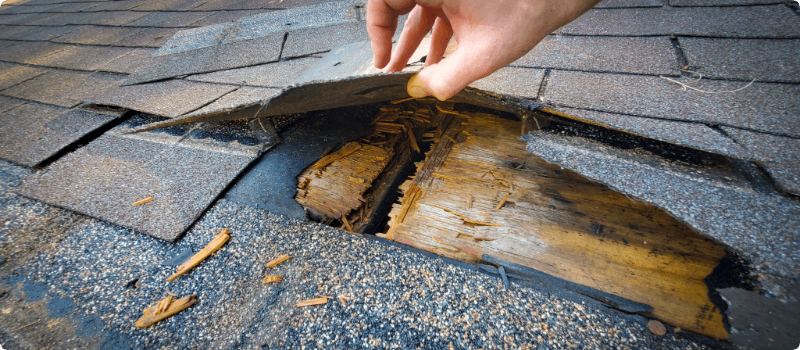
What are the benefits of a new roof?
Safety is usually the first concern and priority to ensure your roof is in top condition. Beyond that, there are several other benefits to replacing your roof.
Safety
Don’t hold off on getting your roof fixed or replaced. The longer you wait, the more problems can arise. It’ll pay to take care of the problem right away since old roofs can collapse or cause some of your home to become uninhabitable.
Increased Property Value
Thanks to a long-lasting upgrade and strong curb appeal, your home will go up in value, and that new roof will practically pay for itself.
Lower Energy Bills
Getting a new roof is a good time to check your insulation. Proper insulation helps keep heat from escaping through your roof. This means your HVAC system won’t have to work overtime to stabilize your home's temperature, resulting in savings on your energy bills.
A Manufacturer’s Warranty
If your new roof is installed by a certified contractor, you may be covered by a manufacturer’s warranty.
Health
A new roof helps prevent certain health hazards, like mold and mildew.
Peace of Mind
A new roof can help you sleep easier at night, knowing you have dependable protection over your head.
How much does it cost to replace a roof?
Prices for a new roof vary greatly depending on a number of factors. For instance, the location of your home, the size and pitch of your roof, accessibility, if you have any adornments, such as a chimney or skylights, and, of course, the material you choose plays a big role in determining cost.
Here are some common roof types to choose from, including advantages and the disadvantages of each. There is a roof type for every budget, but remember that certain materials last longer than others, so a less expensive option isn’t always better.
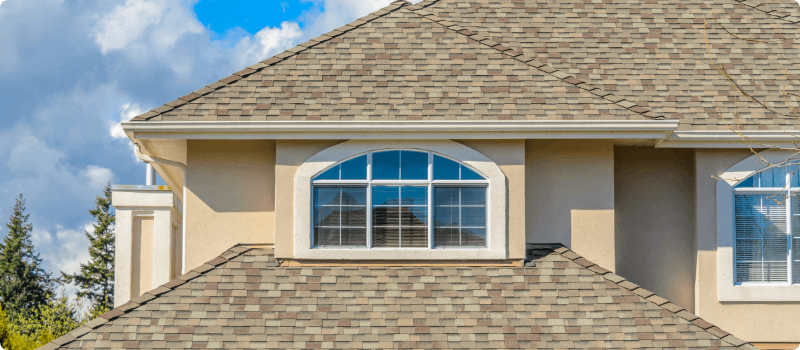
Architectural asphalt composition shingles typically have a longer life expectancy than three-tab asphalt composition shingles, but they’re more expensive.
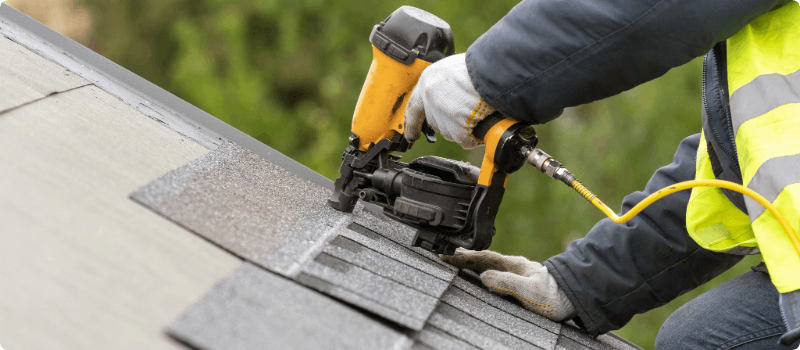
Three-tab asphalt composition shingles are less expensive but have a shorter life expectancy than architectural asphalt composition shingles. Asphalt shingles are the most common residential roofing material used in the United States since they’re economical and easy to install.
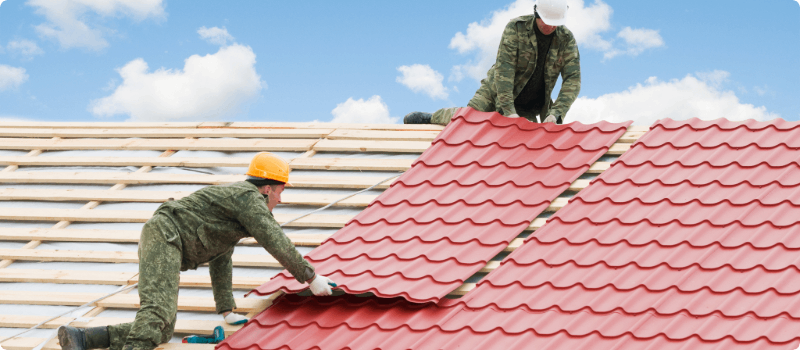
Metal panels are attractive, fire resistant, lightweight and have a long life expectancy. They’re expensive compared to asphalt composition shingles and susceptible to denting from hail and other sources.
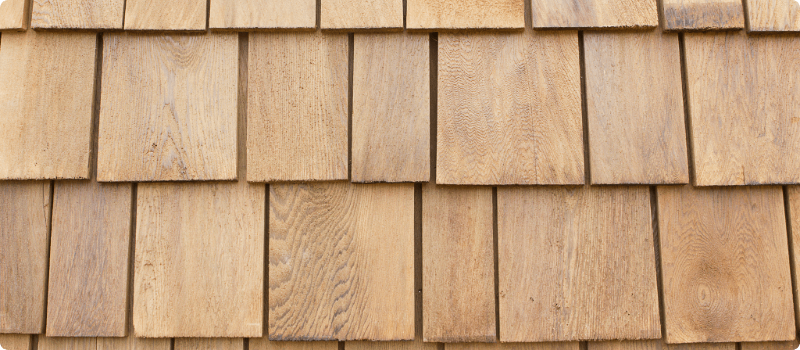
Wood shakes are also attractive but expensive compared to asphalt composition shingles. They’re also highly susceptible to hail damage and often prohibited by local fire codes.
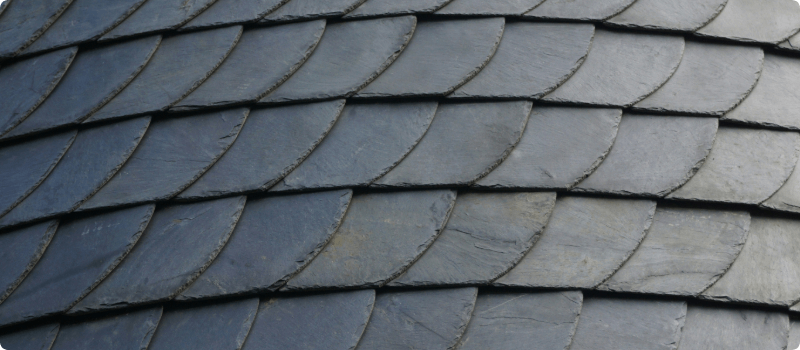
Slate is attractive, fire resistant and has a long life expectancy. However, it's expensive compared to asphalt composition shingles.
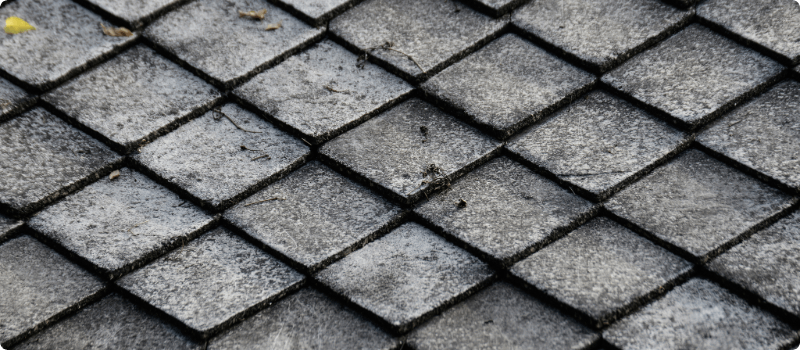
Rubber slate or “faux” slate is less expensive than real slate and has a long life expectancy. It’s made with recycled rubber or plastic, is eco-friendly and resistant to scuffs and tears.

Tile is attractive and has a long life expectancy, but it's only an option in warm-weather climates.
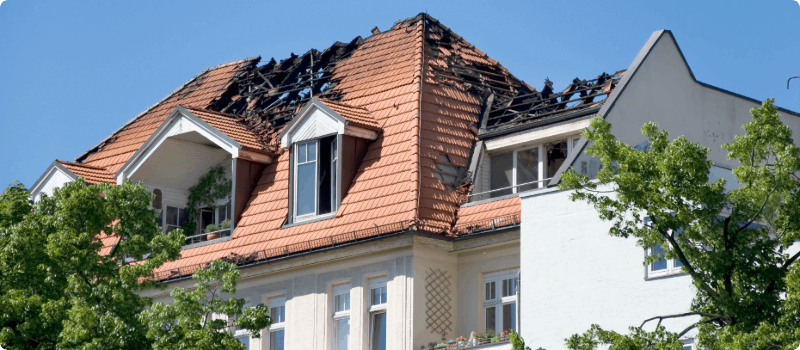
Does my homeowners insurance cover damages to my roof?
With American Family Insurance, your roof is covered by your homeowners insurance, but how you’re covered depends on specific factors. For starters, your base homeowners policy provides replacement cost coverage for losses other than wind and hail. And, if your roof is eligible based on its age and type (e.g., shingles, tiles, slate, wood shake, etc.), roof replacement cost coverage is available for wind and hail damage as well. This means that in the event your roof is damaged due to acts of "Mother Nature," hail, windstorms, down trees and limbs, down power line or satellite dish, we’ll typically reimburse you for the full amount it would cost to repair (or if the damage is significant enough, replace) your damaged roof, minus your deductible. However, if you choose not to repair or replace your roof, our payment will be limited to the actual cash value of the damage to your roof.
Check out our roof replacement coverage page for a closer look at how your homeowners insurance covers damages to your roof.
The benefits of a new roof typically outweigh the costs — in fact, it’s one of the highest returns on investment of all home improvements. Many roofing companies offer free consultations to help you determine what your roof may need so you gain confidence before making any big decisions. When it comes to hiring a contractor, make sure you do your due diligence before signing any contractors. Here are some tips on avoiding contractor fraud and how to choose a contractor.
Not to mention, American Family offers a reduced rating on impact-resistant roofs. A quick conversation with your American Family agent could help you get the new roof you’re looking for at a better price.
This information represents only a brief description of coverages, is not part of your policy, and is not a promise or guarantee of coverage. If there is any conflict between this information and your policy, the provisions of the policy will prevail. Insurance policy terms and conditions may apply. Exclusions may apply to policies, endorsements, or riders. Coverage may vary by state and may be subject to change. Some products are not available in every state. Please read your policy and contact your agent for assistance.

